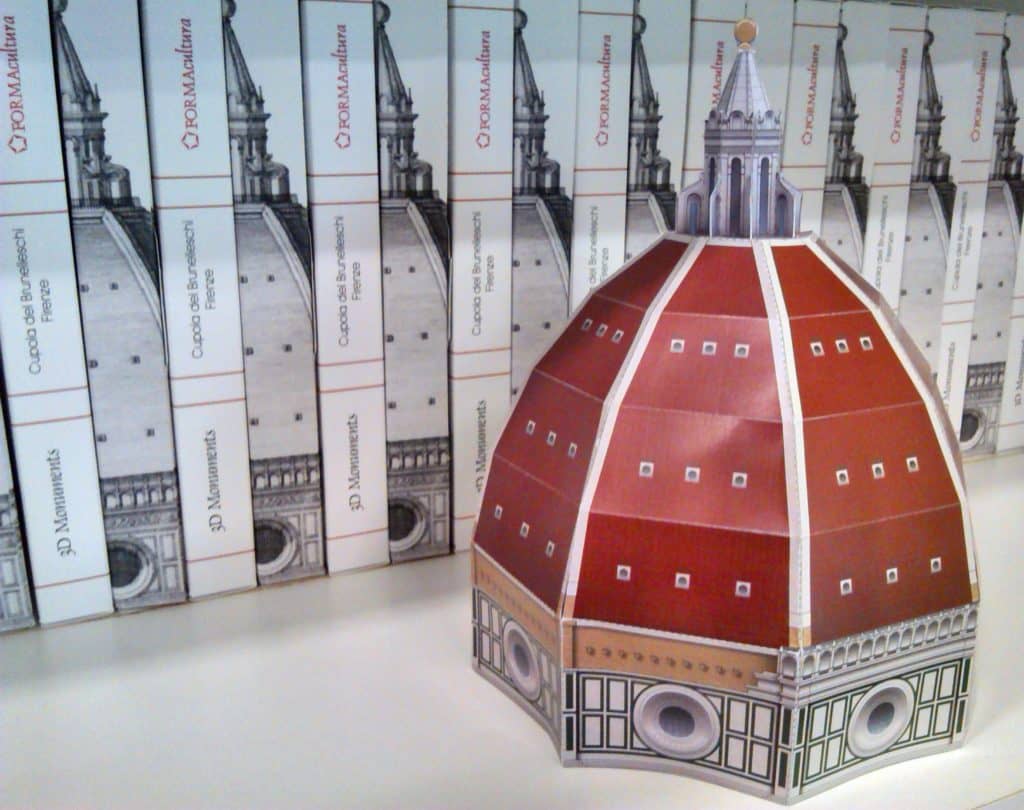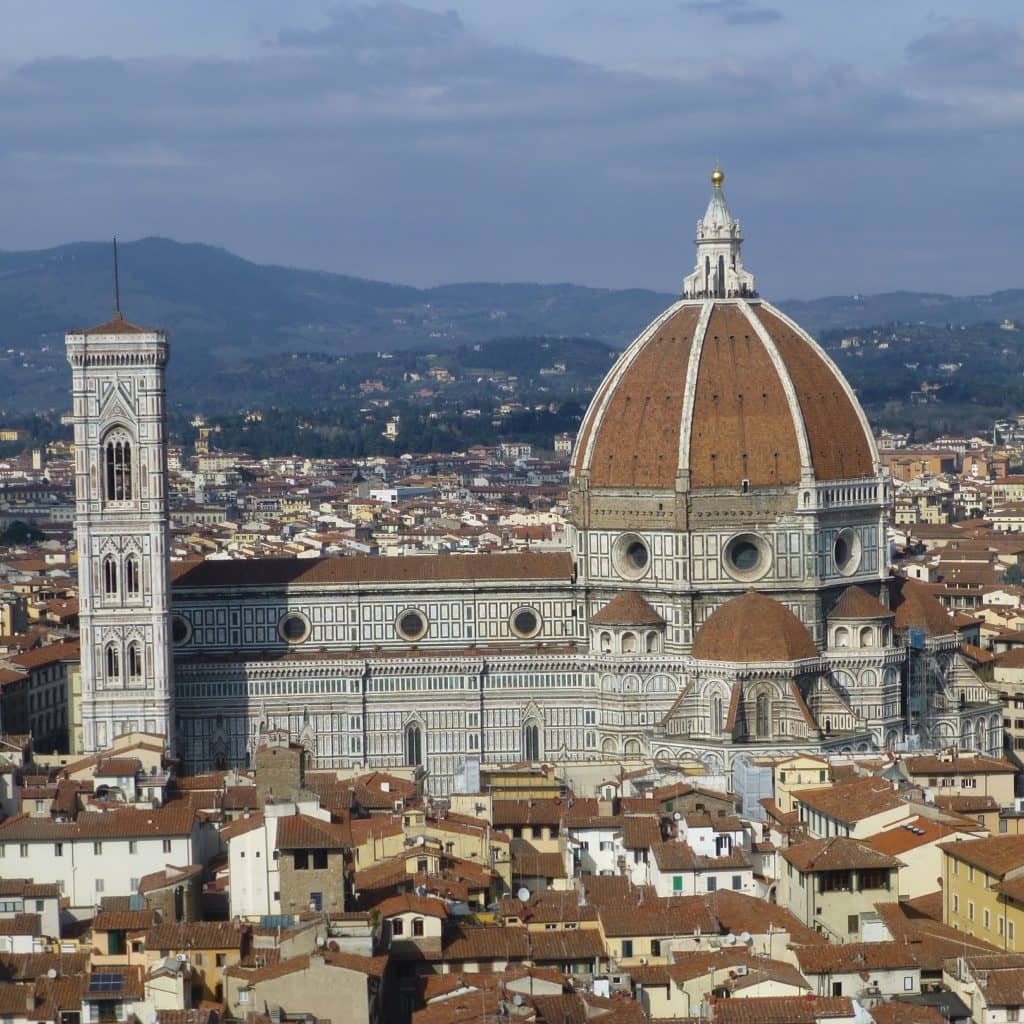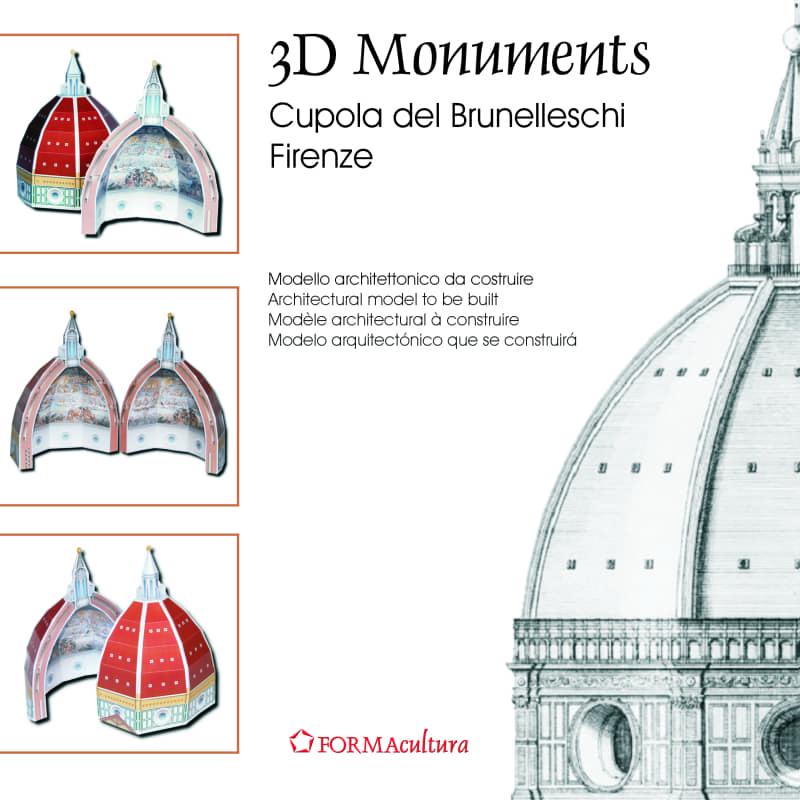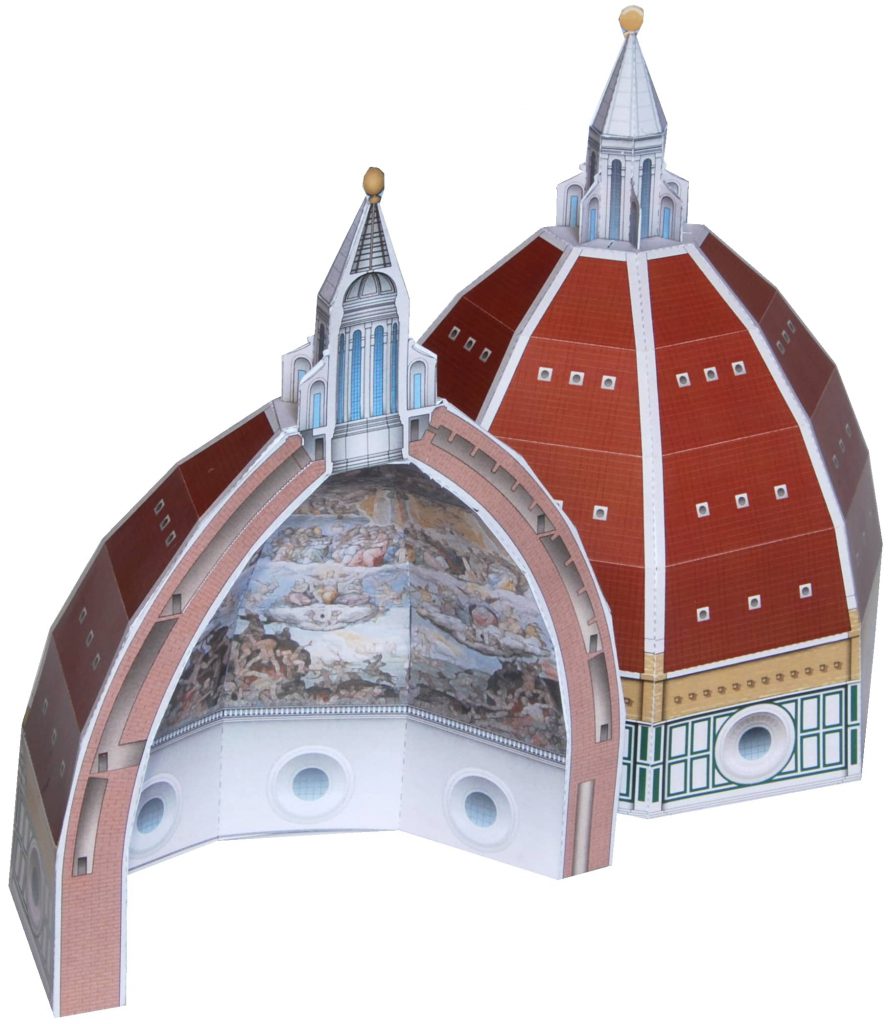The great dome of Santa Maria del Fiore

3D Monuments Firenze Cupola del Brunelleschi
Brunelleschi's innovative technique
Santa Maria del Fiore was started in 1296 on the design of Arnolfo di Cambio. In 1481 the work on the Duomo stopped after the construction of the octagonal drum 46 meters in diameter, on which the dome was to be based. Brunelleschi won the competition to deal with the problems about the dome and its magnitude and two years later work began. Brunelleschi developed a scaffolding suspended from the ground, fixed to the masonry at the height of the tambour, which rose gradually. On this scaffolding he built the dome with a double canopy with the self-supporting inner vault made of herringbone bricks. After the construction of the dome was completed in 1436, the cathedral was consecrated in the presence of Pope Eugene IV.

The completion of the work

It remained to build the lantern, which Brunelleschi had already devised in those years. After another competition, his project was approved, which included an eight-sided prism with buttresses at the corners and tall windows along the sides, with inverted and grooved cone cover. The lantern has the static task of closing the eight sails from which the dome is composed. In drawing it Brunelleschi was perhaps inspired by sacred goldsmiths, such as incensers or ostensors, enlarging them on a monumental scale.
The actual construction began only in 1446 and a month later Brunelleschi died, when only the base had been built. The work was completed by Michelozzo in 1461. Andrea del Verrocchio created the golden ball with a cross on top.
The interior frescoes
For the interior decoration of the Brunelleschi dome, initially planned in mosaic, the Grand Duke Cosimo I de’ Medici chose the theme of the Universal Judgment and entrusted the execution of the frescoes to Giorgio Vasari.
The dome is divided into eight wedges and five registers. Each wedge includes from top to bottom the 24 vigils of the Apocalypse; an angelic chorus with the instruments of passion; a category of saints and elected representatives; a triad of personifications, depicting a gift of the Holy Spirit, the seven Virtues and the seven Blessings; a region of hell dominated by a capital sin. In front of the central nave stands Christ in Glory between Our Lady and St. John the Baptist above the three Theological Virtues and the allegorical figures of Time and the Triumphing Church. Upon Vasari’s death, only the first register was made. In his place was Federico Zuccari, who abandoned the technique of fresco in favor of tempera and included among the chosen a gallery of contemporary figures including himself. The cycle was completed in 1579.

Build your own Dome model


In our shop you will find Brunelleschi’s 3D Monuments Cupola. Packaged in an elegant box with cards to build up the model and its section. Complete with an instruction booklet and a historical description of the monument. Easy to build and with texts translated into 4 languages: Italian, English, French, Spanish. To create perfect models you can follow our tips.

